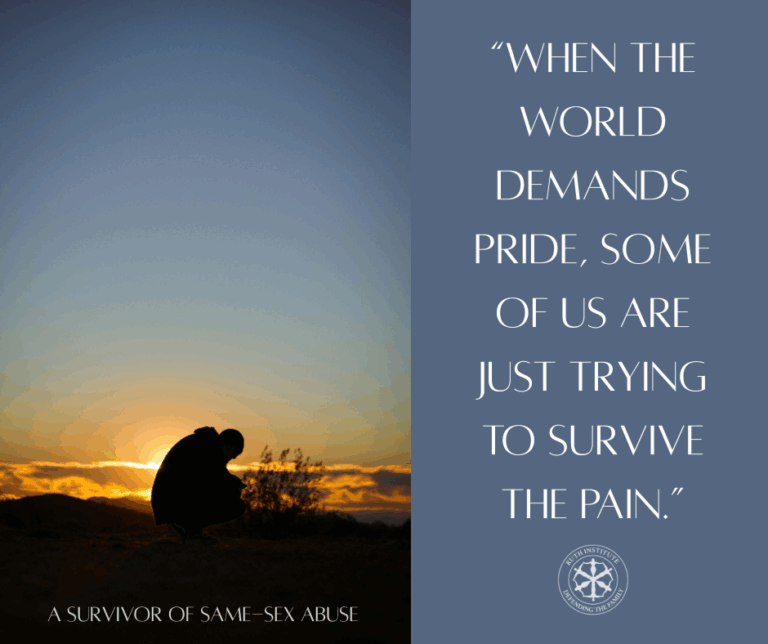by Ryan C. MacPherson, a Ruth Circle of Experts member
Book Review: On the Meaning of Sex, J. Budziszewski
ISI Books, 2011; 145 pages, $27.95
Reprinted with permission from the author from The Family in America.
Noah Webster was no intellectual slouch. Proficient in the languages of the ancient Near East as well as of modern Europe, he painstakingly compiled the
etymology, orthography, and signification of 70,000 words for the great American Dictionary of the English Language published in 1828. A product of
his times, but also a product of one of the best intellectual traditions humanity has mustered in all of time, Webster did not hesitate to follow the
guidance of natural law when defining terms that refer to humanity in its personal, social, and political manifestations. Webster defined sex as “the
distinction between male and female,” male as “pertaining to the sex that procreates young,” and female as “noting the sex which produces young.” And
marriage? “The act of uniting a man and a woman for life; wedlock; the legal union of a man and a woman for life . . . for the purpose of preventing
the promiscuous intercourse of sexes, for promoting domestic felicity, and for securing the maintenance and education of children.”
Two centuries removed from Webster, many people now reject his definitions as being too morally restrictive, too narrowly traditional, too out of step
with the hodgepodge of Facebook status updates, YouTube videos, and MP3 downloads that shape personal identities today. Indeed, for college students
such as “Harris,” the question no longer is whether Webster got the definition of “sex” right, but whether “sex” has any meaning at all.
Harris is certain that sex is meaningless. And yet, Harris is just as certain that the factories for human reproduction depicted in Aldous Huxley’s Brave New World are appalling. In the opinion of Harris’s philosophy professor, J. Budziszewski, Harris must be confused. How can the student say that sex has no meaning
and nevertheless find it appalling that procreation has been separated from sexual intimacy and performed by a factory in the absence of parents? With
this puzzle Budziszewski begins a book of philosophical inquiry, entitled On the Meaning of Sex.
Although Budziszewski does not turn to Webster’s Dictionary (he does not even cite it once), the conclusions he draws align with such wisdom from the past.
Making such conclusions palatable to a postmodern audience is, however, a formidable challenge. Professor Budziszewski might be one of the last people
on earth crazy enough to attempt just that—and with a fair amount of success.
For starters, the account of Harris demonstrates that “sex means something to us even if we don’t admit to ourselves that it does.” From this modest foundation—to
which even the Harrises of the world find themselves assenting, however reluctantly—the good professor proceeds to build a case for three other
claims: meaning is not arbitrary, human nature is not an oppressive construct but the “deep structure of what we really are,” and “human will isn’t
something separate from human nature.” The course is thereby charted to discover what human nature is, to discern how human nature relates to the meaning
of sex, and to conclude how the human will ought rationally to approach the topic of sex.
Of course, an author must first ask whether anyone else cares—for whom would it be worth writing on such topics? Budziszweski has three audiences
in mind. He writes first for his own generation, the sexual revolutionaries of the 1960s, with the hope that “perhaps we can do better with our children’s
children than most of us did with our own.” He also writes for the current generation coming into power, which has begun to recognize, for example,
that divorce and cohabitation put children at risk, whereas lifelong marital fidelity provides children with the best upbringing as gauged by a variety
of statistical measures. Finally, Budziszewski hopes to alleviate the burdens that his own generation has placed upon today’s young people. His philosophical
style, however, makes the book accessible especially to broadly read individuals who have a grasp of the liberal arts, sufficient at least to appreciate
his allusions to Aristotle, Dante, and Freud. Readers who shy away from such erudition will at least appreciate some cameo appearances by Katharine
Hepburn, Mother Teresa, and Naomi Wolf—a diverse crowd to be sure.
In two simple sentences, Budziszewski conveys his straightforward thesis: “we aren’t designed for hooking up. Our hearts and bodies are designed to work
together.” Or, more positively stated: only in celibate singleness and faithful marriage do the heart and body truly maintain integrity. Budziszewski
defends his appeal to the natural design of human sexuality with an analogy from medicine:
Consider the young glue-sniffer again. How should we advise him? Is the purpose of his lungs irrelevant? Should we say to him, “Sniff all you want, because
an is does not imply an ought”? Of course not; we should advise him to kick the habit. We ought to respect the is of our design. Nothing in us should be put into action in a way that flouts its inbuilt meanings and purposes.
What, then, are the inbuilt meanings and purposes of sexual union? The Harrises of this world, once they come around to admitting that sex has meaning
after all, generally settle upon pleasure. Budziszewski disagrees. “Sex is pleasurable,” he acknowledges, “but there is nothing distinctive about that.”
What, then, distinguishes sexual intercourse from other pleasurable experiences? Objectively, sexual intercourse unites two persons as one and has
the potential to generate a third person, their child. Therefore, the inbuilt meanings and purposes of sexual intercourse are unity and procreation.
And if this is the case, then traditional sexual mores serve as rational, and preservative, commentaries on human nature: “Honor your parents. Care
for your children. Save sex for marriage. Make marriage fruitful. Be faithful to your spouse.”
Budziszewski goes a step further. Not only does he find a rational basis for the traditional values of chastity and fidelity that maintain a tight connection
between marriage, sex, and childbearing, but he also claims a natural rationality for the distinctions between men and women that were taken for granted
in times past but now are everywhere denied. Summarizing physiological research conducted over the past few decades, he concludes that men and women
differ in far more than just their genitals. “Our brains are even more different than the rest of our bodies,” accounting for cognitive and emotional
distinctions that enable an individual man and an individual woman to form a complementary pair. As for the old nature-nurture debate, Budziszewski
sides strongly with nature, while acknowledging that each culture adds nuances to how men and women live out their gender differences.
Regrettably, Budziszewski says next to nothing about homosexuality, potentially rendering his argument out-of-date amid the rapid accommodation to same-sex
“marriage” that several state legislatures and public officials have made during the two years since On the Meaning of Sex was published.
On the other hand, what the book does discuss has relevance to the controversy over the public status of same-sex relations. For example, a chapter
on love articulates the connections among objective meaning, human nature, and human will rehearsed earlier by noting that “although we are more than
bodies, we are never less than bodies [and] . . . the distinctive thing about sexual love is that it desires the joining of polar, corresponding bodies.”
Only one man and one woman can truly unite as one flesh, and only such a union has the potential for procreation. The unitive and procreative dimensions
of sexual love thus have a specifically heterosexual orientation.
Recognizing that love may (and often does) involve strong feelings, Budziszewski finds a particular exercise of the will even more intrinsic to love, namely,
“Marriage rests on a . . . radical assumption: that promises can be kept.” Marital love is “a permanent commitment of the will to the true good of
the other person.” That commitment manifests itself in the bodily union of a man and woman as one flesh and in their mutual fidelity, which protects
not only each other as spouses but also the children whom they thereby might conceive. Indeed, the commitments of individuals to remain celibate while
single and of married couples to remain faithful to each other protect the entire society from a host of emotional and immunological traumas while
also providing the best possible foundation for the maturation of children.
So far, Noah Webster would have agreed. Why, then, does Budziszewski seem to be among such a minority today? (By his own admission, he could lose his university
job for teaching in the classroom what he has published in this book.) The final chapter suggests that as a culture becomes farther removed from Christian
theology, it loses its understanding of human nature and the meaning of sex. “Human love,” concludes Budziszewski, “makes sense only in light of divine
love.” The imperfections of human sexual love suggest a more perfect model toward which we fumbling mortals strive. More particularly, the existence
of love itself testifies something of God’s nature: if God’s love is eternal, and love is relational among persons, then God must eternally exist as
a plurality of Persons, namely, the Holy Trinity confessed by Christians.
Budziszewski’s final claim in favor of Trinitarian Christianity risks alienating other partners in the broad Judeo-Christian and natural law traditions.
But self-alienation, argues Budziszewski, is precisely what the Harrises of this world already have, for they lack a genuine knowledge of their own
nature as sexual beings. If the unitive and procreative nature of human sexuality points not only to marriage but also to God, then let it be so, says
Professor Budziszewski.
Ryan C. MacPherson, Ph.D., is author of Rediscovering the American Republic (2 vols.) and Senior Editor of The Family in America. He serves as chair of the History Department at Bethany Lutheran College in Mankato, Minnesota. This article is republished with permission from The Family in America, the Journal of the Howard Centre for Family, Religion & Society.



